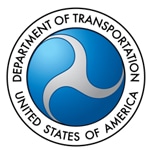
In November, the federal Department of Transportation finalized a rule that added four semi-synthetic opioids – hydrocodone, hydromorphone, oxymorphone and oxycodone – to its testing regimen, despite opposition from a number of unions. Brand names of some of those opioids include OxyContin, Percodan, Percocet, Vicodin, Lortab, Norco, Dilaudid and Exalgo.
Effects of this expansion, which took effect Jan. 1, as reported by the Transportation Trades Department of the AFL-CIO (TTD) include:
- Employees who are tested for these drugs and cannot offer a legitimate medical explanation such as a prescription will be recorded as testing positive.
- Employees who have a valid prescription and test positive will have their results downgraded to a negative.
- Medical review officers (MROs) cannot deny the legitimacy of a prescription for the purpose of establishing a legitimate medical explanation for the positive test. However, the MRO retains the right to flag safety concerns.
- Clarification of what a “valid prescription” is, especially regarding medication given to take “as needed” as opposed to one prescribed to be taken in a strict time frame is needed and could be affected by the discretion of the MRO.
- The rule establishes three new “fatal flaws” to a test: 1. Absence of a Chain of Custody Form (CCF); 2. A specimen is not submitted along with the CCF; and 3. Two separate collections are performed using a single CCF.
Comments from the TTD opposed the cutoff levels established for a positive test, requested additional training for MROs, sought clearer guidelines to define what constituted a valid prescription and implementation of a process to challenge the findings of an MRO. These suggestions were disregarded. In addition, the DOT also ended its blind specimen testing program over the TTD’s objection.
Members should contact the SMART Transportation Department Legal Department if any issues or difficulties arise from this expansion to the DOT’s drug-testing protocols.
Related News
- Online fundraiser established for Local 821 officer’s family
- Ground broken on Brightline West — new rail jobs incoming!
- After FRA rule, Jared Cassity explains why we still need the Rail Safety Act
- ALERT for L.A.-area members — operator stabbing suspect at large
- SMART-TD wins SEPTA members’ security in their chosen craft
- Shining brightly in the midst of darkness
- Early-bird pricing for TD National Training Seminar ends April 30
- SMART-TD endorses U.S. Sen. Mike Braun (R-Indiana) as the next governor of the Hoosier State!
- FTA action on bus, transit safety plans praised by SMART-TD
- 27 transit members reinstated back to work in Montebello, California